CAESIONIDAE
Fusiliers
By Yukio Iwatsuki and Ukkrit Satapoomin
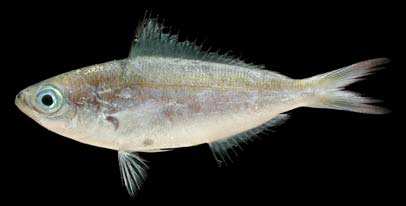 Caesio caerulaurea |
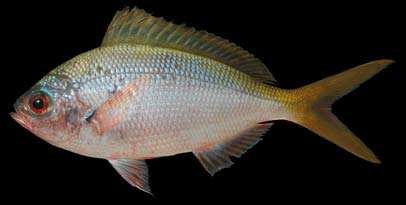 Caesio cuning |
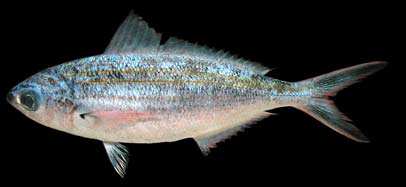 Caesio varilineata |
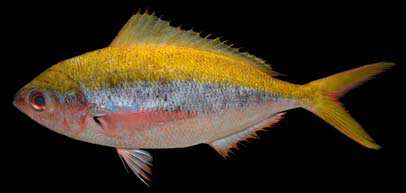 Caesio xanthonota |
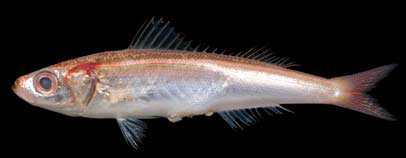 Dipterygonotus balteatus |
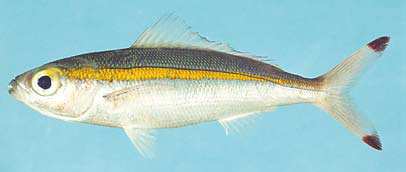 Pterocaesio chrysozona |
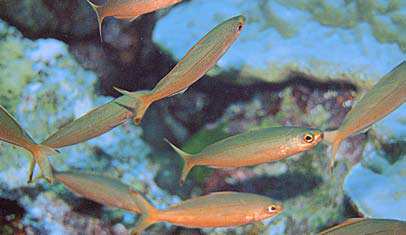 Pterocaesio pisang |
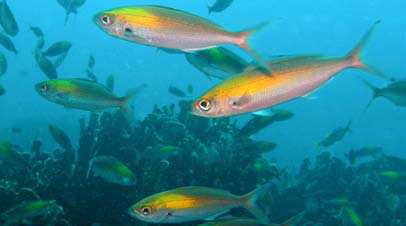 Pterocaesio randalli |
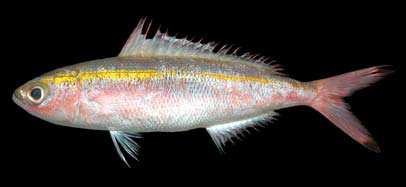 Pterocaesio tessellata |
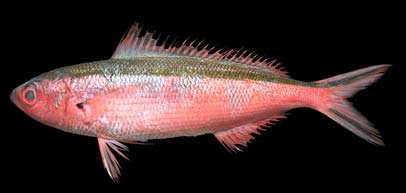 Pterocaesio tile |
|
Body oblong to fusiform, moderately compressed, medium-sized to small (to about 50 cm) fishes; longitudinal axis from tip of snout to middle of caudal fin passing through center of eye. Eye moderately large, its diameter longer than snout length. Mouth small and highly protrusible. Dentition variously reduced; small or minute conical teeth; premaxilla, vomer, and palatines with or without teeth. Dorsal fin with X-XV slender weak spines and 8-22 soft rays; anal fin with III spines and 9-13 soft rays; pelvic fins with I spine and 5 soft rays; pectoral fins with 16-24 rays; caudal fin distinctly forked, with pointed lobes. Branchiostegal rays 7. Scales moderate to small, weakly ctenoid; lateral line scales 45-88; scale rows on body running horizontally; dorsal and anal fins with scales in most species. Color: sides with or without longitudinal stripes; caudal fin either without markings, with blackish blotch on tips of lobes, or with a longitudinal blackish streak in middle of each lobe; axil of pectoral fins black. Similar families occurring in the area. of any single external character, but most members of Lutjanidae having a deeper body, the eye well above the horizontal axis of the body, and lacking a strongly forked caudal fin; those lutjanid genera with the horizontal passing near the center of eye either having scale rows running obliquely upward, fewer than 9 anal fin rays, no scales on dorsal and anal fins, or the caudal fin much less deeply forked. Nemipteridae: eye above horizontal axis in most species; 9 dorsal fin rays and only 7 or 8 anal fin rays. Lethrinidae: eye always above horizontal axis of body; base of soft part of dorsal fin generally shorter than base of spinous part; 8-10 soft rays in anal fin; usually enlarged canines in front of jaws, sometimes lateral molars. Emmelichthyidae: superficially similar but caught in deep water; maxilla fully scaly; dorsal fin with IX spines and usually 12 soft rays. Remarks. During the day they occur in large zooplankton feeding schools in mid-water over the reef, along steep outer reef slopes and around deep pinnacles. They shelter within the reef at night. Fusiliers are important food fishes and are also used as bait in tuna fisheries. |

|
|